|
Last Page Update:
October 4, 2001
Contact
Copyright Information
Main Page
Structure of the Red Kaganate
Gatherings, Events,...
Historic Steppes Tribes
Legends of the Nomads
Flags and other Identifiers
Clothing and Apearance
Food and related Matters
Armour
Archery
Weapons and Combat
Public Forum
Resource Links
Email:
[email protected]
Editor:
Norman J. Finkelshteyn
|
12th - 13th Century Tunics
By Steven Baker
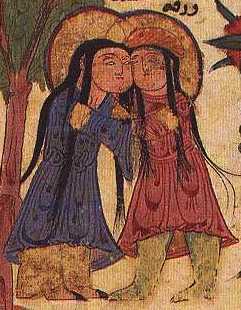
Tunics for Steppe nomads are not well represented in the archaeological record, which maybe due to something noted by Ibn Fadlan in the 10th Century. He stated that when he gave their guide a coat as a gift the guide removed his own coat and underneath was shirt that was soiled and in tatters. It would seem they never removed or washed clothing that had touched their skin. What ever the cause for this lack it has meant I have had to use several sources to come up with a tunic. The first is the Egyptian shirt from 'Cut my Cote'. This gives us an actual shirt close to the period of interest but with no solid connection to the steppe nomads. The other is to use manuscript paintings mostly from the Varqa wa Gulshah saga (see figure 1). From these, several guidelines for tunic design can be determined.

12th Century Egyptian Tunic reconstruction as worn.
|
These are:
- Tunics are long and are worn draped over a belt. They reach to mid-calf when worn this way and probably reaching to the ankles when no belt is worn.
- Tunics are definitely not figure hugging but neither are they excessively loose.
- The sleeves are longer than the arms and the sleeve opening is tight to the wrist for those engaged in active pursuits - hunting and war. For those with supposedly less active pursuits - women, merchants etc - the sleeves are shown widening towards the end (see figure 1).
- The neckline sits along the base of the neck and as such will need some sort of slit opening to get it over the head. If Gulshah's tunic is the same style as Varqa's then her neck opening suggests either a straight slit down the front or a slit down the right side. An alternative is shown on the Egyptian shirt which has a slit running along the right shoulder.
- The tunics may be lined. Several of the pictures show a different colour inside the tunic to the outside. This may however be artistic licence.
- The hems when seen are definitely 25mm (1") or more in depth.
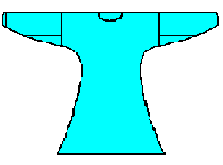
Drawing of 12th Century Egyptian shirt |
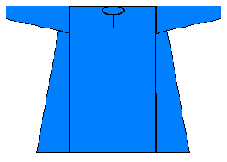
Drawing of a 13th Century Egyptian Under Tunic |
So we can either go with the Egyptian shirt or some other that seems to fit within the guidelines. Alternatively we can make a best guess based on things like loom widths for nomandic weaving, styles developed by other nomads or 19th century Turkish/Mongolian tunics. I have gone for the former as it seems more reliable than the guess work of the alternative. Also relying on something so far out of period is the reason a lot of re-enactors have tunics the same length as modern shirts.
Another area that is open to interpretation is that of under tunics. There are suggestions that these existed and were made to the same pattern as the ordinary tunic but of lesser cloth. It is also equally certain that they were an item that might not be worn. There is a manuscript painting showing a possible under tunic from a tale of a greedy man. The tunic shown has tight elbow length sleeves and is tucked into a pair of trousers. Given the tightness of the trousers it seems likely that this tunic is either short or had slits up the side.
The pattern provided here is from 'Cut my Cote'. It's a 12th century Egyptian man's shirt.
Click for Shirt Pattern
The neck and sleeve edges are finished off with silk ribbon.
The black areas are wastage which could be recycled for edging strips on other tunics.
Detail photographs of the reconstruction are provided below.
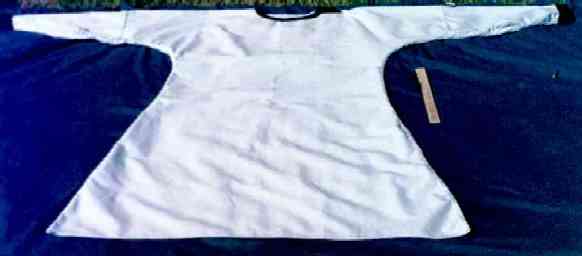
12th Century Egyptian Tunic reconstruction layed out.
|

Sleeve detail. The ruler gives you an idea of length. |
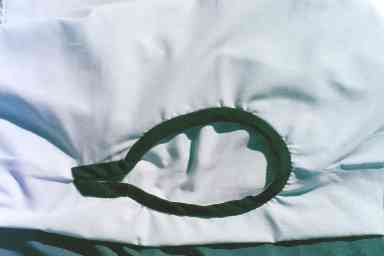
Neck line detail. I still need to determine what was used to close the slit. |
This is a somewhat reorganised version of information presented at Steven Baker's Steppes Nomad Resource Site - http://www.geocities.com/qilich.
|






